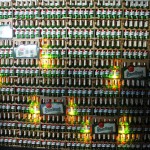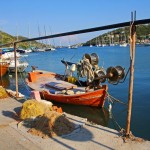Annapurna, Nepal – Open For Business (16.08.15)
Without doubt the Annapurna mountain region of Nepal remains one of the most thrilling trekking destinations in the world. Dominated by Annapurna I, the tenth highest mountain in the world at 8,091m, the range also includes thirteen peaks over 7,000m and sixteen over 6,000m.

1983: Muktinath
Covering an area of over 7,000 sq kms, the Annapurna Conservation Area is the first and largest in Nepal. It is a rare treat for anyone wishing to experience not only jaw-dropping mountain scenery, but also a unique rural mountain community. A community and people that have come to the forefront of people’s minds around the world this year, after the devastation of the earthquake last April.

So after the Foreign and Commonwealth Office recently altered their Travel Advice to include the Annapurna region as a safe destination, it is a relief that arranging trekking tourism from the UK can now re-commence. Not least as we at Nomadic Thoughts fully appreciate that the magnificence of the region is matched by the pressing need for income from international tourists – to support, bolster and continue assisting in the overall sustainability of the local communities.
I fell in love with the region over thirty years ago when I first trekked around the Annapurna Circuit and up into the Annapurna Sanctuary in 1983. The route was relatively remote in those days. I trekked the upland regions in particular, where staying the night meant sleeping on local people’s floors, huddling around family fires and eating hot rice and nettle soup, day after day.

Trading caravans en route to Tibet
The warmth, welcome and friendship of the local communities have stayed with me forever. Since then the area has developed into one of the most important Nepal tourism trekking routes, covering an exciting diversity of terrain for over 230km. Climbing up and over the Thorung La Pass (altitude 5,400m), trekkers circle the Annapurna massif, before hiking up into the dramatic high glacial amphitheatre of the Sanctuary at 4,000m.
This brings you face to face with Machapuchare (Fish Tail, 6996m) and the enormous ring of other peaks topping 7,000m. The contrast is dramatic. Trekkers experience constantly changing landscape, vegetation and local community cultures. From fast flowing rivers, rhododendron forests and bamboo clusters in the lowlands, to glacial peaks, desert-scape mountain passes and remote villages in the highlands.

As the monsoon subsides and the local communities begin to plan for the next trekking season (October – April) I do highly recommend a trip to this remarkable part of the Himalayas.

















Trekkers (small dots) heading up to Throng La Pass

1983: ‘Snow View Hotel’ – originally the only sleeping facility at Annapurna Sanctuary



1983: Manang









